SIDESTEPPER / “Llegare”
I’m fixin’ to do something we Negros are infamous for doing: I’m going to pontificate on something I don’t “know” squat about. But it’s something that I “feel” like I understand, so in a Negroidal way, it’s OK for me to mouth off.
(Note that this is different from bullshitting. When you be bullshitting you not only know you don’t know, you also don’t have any feeling for the subject under discussion, you’re just flat out fabricating.) So with your permission—if you do not approve, just stop reading and move on to the Covers section. ;->)
I’m dividing this into two parts.
THE FACTS
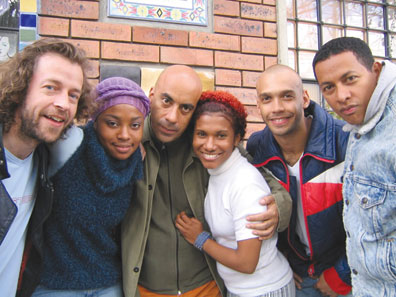
Sidestepper is an Afro-Colombian (South American) aggregation with an Englishman DJ/producer. In other words, an authentic “American” (as in “new world”) band. The core members are: Richard Blair – bass and beats; Ivan Benavides – guitar and vocals; Janio Coronado – vocals; Kike Egurrola – drums; Erika Munoz – vocals; Gloria Martinez – electronics and vocals.
Richard Blair became interested in Colombian music while working as a recording engineer at Peter Gabriel’s Real World studios on a recording session with Toto La Momposina, the queen mother of Afro-Colombian music. Blair was so smitten he decided to visit Colombia on a short vacation. A couple of weeks became a couple of months that in turn evolved into a job (should say a bunch of jobs) working as a freelance engineer ‘cause by then, Blair had no intentions of leaving.
With a background in both drum and bass, and in “world music” Richard Blair began to hear concordances between England, Africa and Colombia, began to see possibilities for a new music that was a synthesis of the three. Blair started working on the regular with Colombian musicians. (If you want to read a more extensive breakdown go to this write-up.)
Over the years, beginning in 1997 with their first recording Southern Star, Sidestepper continues to evolve. They are a planet with three moons: they work in the studio, they work clubs and concerts as a full band, and they also do electronic beats, percussion & vocals/raps in clubs. Each of the foci has its specific sound.
Beyond the aural, there is also a socio/politico thrust to this music that is probably not obvious to those unfamiliar with Colombian culture. As Richard Blair notes, part of his goal was to produce a music reflective of the totality of Colombian culture (which is a positive spin on a basic struggle to overcome white supremacy and cultural hegemony).
Normally the Costeños [people from the coast] hang out with Costeños. And the people from Bogota hang out with other people from the city. Bogota is in the mountains, and the stereotype is they are all intellectual and very cold. The stereotype of the Costeños is that they’re uncouth and loud. Once we put the band together, it became more fashionable to appreciate Black people and Black music in Colombia. All the pop bands here are basically White rich kids. The best thing we could do without saying a word is just appear on stage.
—Richard Blair
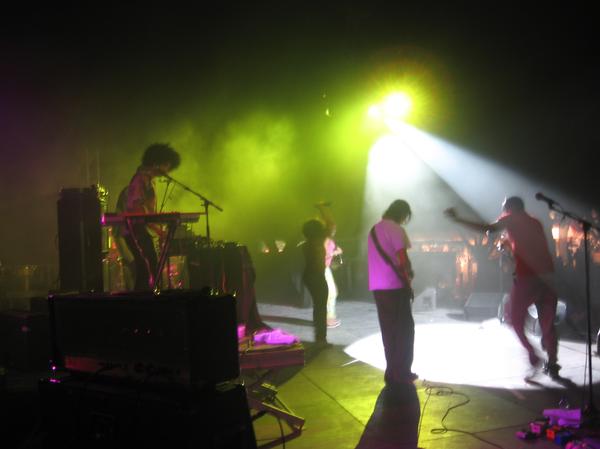
As Blair delved deeper into the musical culture of Colombia and the influences from Jamaica and Nigeria, Blair made a discovery that in retrospect is obvious: “The more I hear from these three places, the more I hear a relationship. There is some Nigerian music that sounds as if it could easily be Colombian. So I tried to create a Colombian Afro-beat.”
The tracks in the jukebox cover all six of the main Sidestepper releases. You can hear the development of their sound. Unfortunately, the early releases are extremely difficult to obtain here in the USA, which is part of the reason we have such a generous sampling off Sidestepper music in the jukebox.
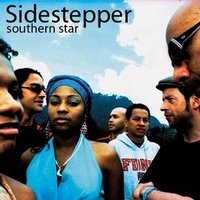
From Southern Star (1997) we get: “Theme from Spang,” “Chimbay Blue,” and “Maine.”

From Logozo (1998) we get: “Logozo” and “Sugarcane (Headspace mix).”
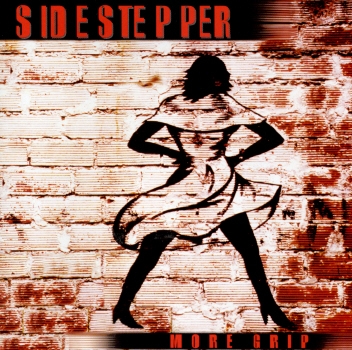
From More Grip (2000) we get: “Linda Manigua,” “Hoy Tenemos,” “La Bara,” and “Bacalao Sala’o.)
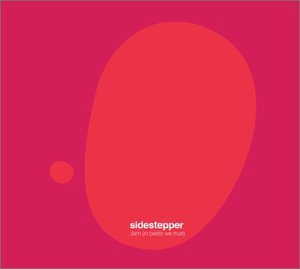
From 3AM (In Beats We Trust) we get: “Walking,” “In The Beats We Trust,” “Deja (Mary),” “Mas Papaya,” and “Llegare.”
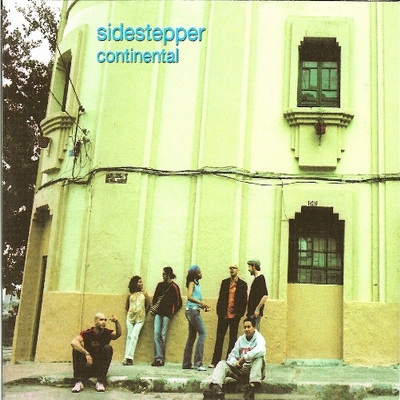
From Continental (2006) we get: “San Juan,” “Ne Me Rendire,” “Que Sera,” and “La Paloma.”
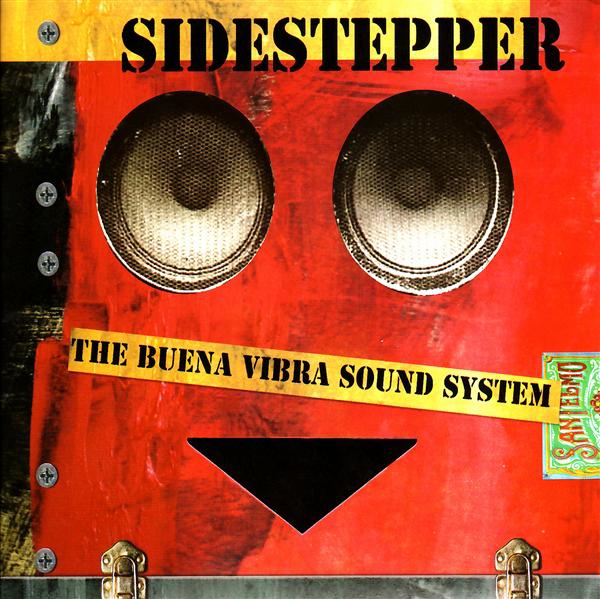
From The Buena Vibra Sound System we get: “Deja (Richard Blair Remix),” “Hoy Tenemos (Boyz From Brazil Remix),” and “La Paloma (12inch Mix).”
MY FEELINGS
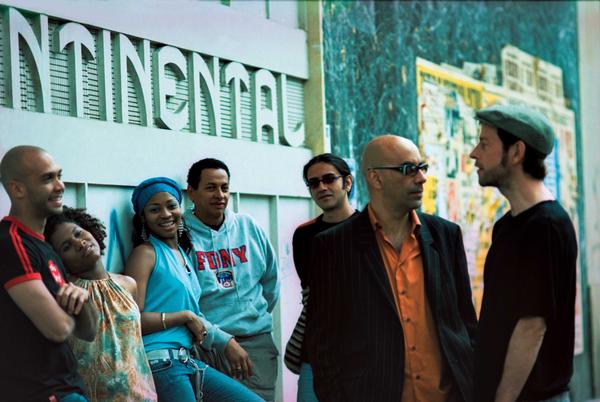
Sidestepper represents a conscious development of the creole identity—I should say the “politicized creole element” in Colombian culture. This mixing process has a number of strains. One strain is the mixing of acoustic with electronic elements. Another strain is the mixing of Euro-centric sensibilities with Afro-centric sensibilities.
I am a bit apprehensive about using the short hand of "creole" and “centricity.” I do not mean to imply the dominance of one over the other, or some sort of racial essentialism in outlook or cultural behavior but I do mean to recognize different worldviews and also recognize the centrality of cultural fusion to the "American" identity—where "America" includes all of the Americas from Canada to Chile and the Caribbean.
For those interested in a fuller understanding, I strongly recommend Music of the Common Tongue: Survival and Celebration in African American Music by Christopher Small, an musicologist from New Zealand who has done both extensive and amazing work in identifying and mapping out specific behavior and cultural modalities in music (hence the “centrics”).
For the purposes of this brief overview, I will confine myself to the production and uses of music.
What I most admire about Sidestepper is the minimalism, the stripping down of polyrhythms to a bass line against a single drum beat, or a melody running in counterpoint to the rhythm. Because Sidestepper’s music is never busy or elaborate, one might think it’s easy or rudimentary. That would be a mistake.
Particularly More Grip and 3AM exemplify an understanding not only of the African origins of the music in its rhythmic sophistication but also the tonal qualities have African origins. Listen to how the voices sound, how the singers attack the notes, the keening quality in the voices of the women, the cleanness of the falsetto and the gruffness of the lower pitches.
Beyond all of that, you get the clear impression that this is trance music, i.e. music designed to transform the listener, in some cases to make the prevailing conditions easier to bear but in other cases the purpose of the transformation is to inspire dreams and insights that will lead the listener to literally transform the environment. This intention to transform the listener rather than simply entertain an audience is a major component of Afrocentricity.
Without going on too long, Sidestepper appeals to my valuation of trance music.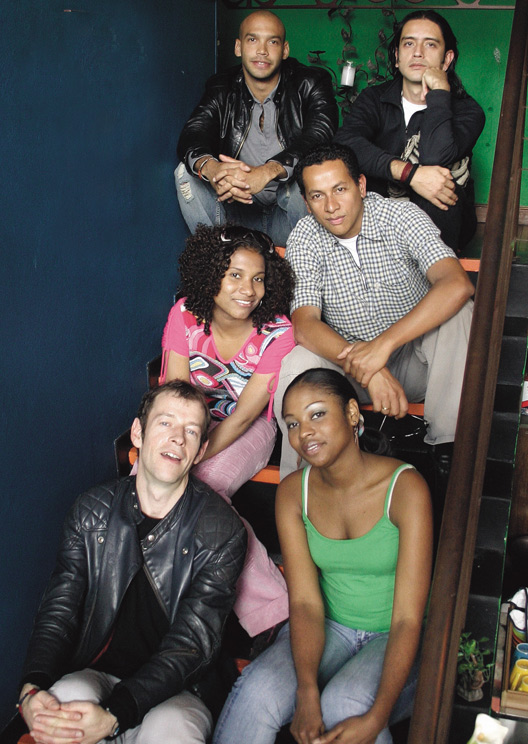
In researching Sidestepper I noticed that without exception the media pays close attention to the fruit and totally ignores the root. The preponderance of quotes are from Richard Blair. The dangerous subtext is that he is the brains of the operation. To be clear, I don’t believe that Blair believes this but rather that the media projects this.
My first and second questions to those media types and others who are enthralled with Blair are: 1. Why do you think Blair is so taken with these self defined “afro” sounds, and 2. Shouldn’t there be an equal focus on those key elements as there is on the putting together of the elements? It is too easy, by far, to look at Afro culture as a Lego block that Euros use to create fantastic constructs. My belief is that both the process of producing Afro-centric culture and the culture itself is not only valuable, our cultures and the process of producing our cultures are also intellectual achievements.
The other musicians and singers are important.
This is not simply an argument about white brains versus black brawn. We have confronted this particular situation when trying to understand James Brown. While some argue that there is only one James Brown and that none of the band members could do what he did before or after working with James, therefore we should elevate James Brown to the pinnacle and not focus on the other musicians.
While I recognize the valid parts of the argument, there is a deeper reality. James Brown may have been the only James Brown but there were other musicians (George Clinton comes immediately to mind) who put together influential and important funk aggregations. I think winner-take-all capitalism and emphasis on American individualism blinds us to the importance of the collective and the existence of multiple nuclei, multiple centers that become significant spheres of influence.
In the case of Sidestepper, I am arguing that while Blair obviously brings a lot to the table the others also bring important elements, and more than that, we should also be aware of the importance of the table itself. After all, Blair is not trying to write classical music, nor is he trying to build on English folk music. There are critical elements intrinsic to this Afro-centric table, aspects that are significant about the ways in which folk embedded in Afro-centric cultures produce and use music.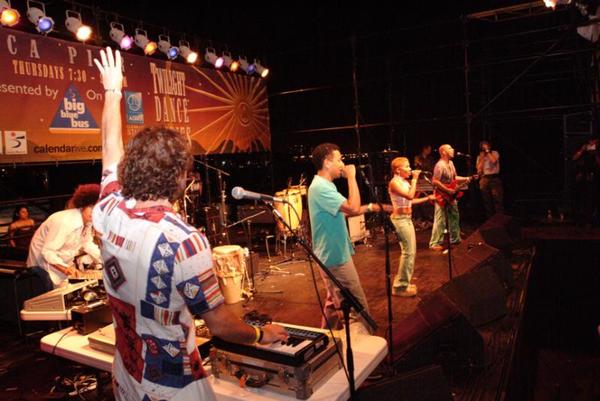
To me, Sidestepper is an aural recognition and representation of the importance and social significance of true Creolization, the true merging of human efforts to learn one from another and build on the accomplishments of each other without ignoring or eliminating the existence of one aspect in favor of the elevation of another aspect. For too long integration has meant adapting Euro-centric dominance.
As their name connotes, Sidestepper shows us a way to avoid losing ourselves as we move into the future.
My thumbnail on the six projects is:
Southern Star is heavy on the traditional Colombian elements.
Logozo is obviously drum and bass oriented.
More Grip and 3AM (In Beats We Trust) are my favorites for their trance heavy, rhythm-minimalist grooves.
Continental foregrounds vocals and horns, and as such has a lot in common with Southern Star.
Buena Vibra Sound System is a hybrid, none of the tracks are new. It’s mostly alternate takes and remixes, most by Richard Blair but two are done by outsiders. Sound System is a case in which the “new” recording is actually a reworking of old, pre-existing music.
Hopefully this quick overview and thumbnail philosophical investigation, plus almost two hours of Sidestepper music will lead us at least to recognize and possibly even appreciate the existence of music from outside the USA that is a sibling of the black music we produce here inside the USA. It’s all African heritage music, a product of cultural creolization, music that is commonly and simply better known as “black music.”
—Kalamu ya Salaam
Baba, you're nuts!
"To me, Sidestepper is an aural recognition and representation of the importance and social significance of true Creolization, the true merging of human efforts to learn one from another and build on the accomplishments of each other without ignoring or eliminating the existence of one aspect in favor of the elevation of another aspect..."
I like the way you put that, Baba. The first Sidestepper project I heard was More Grip. I loved it. I never thought about it enough to put my feelings into words the way you did, but I had the feeling that I was listening to a true merging of different musical traditions. I could hear the club/electronic elements and I could certainly hear the Colombian elements. I've heard very little Colombian music, so I couldn't honestly know if the Colombian aspects were/are authentic or not, but the music just "felt" right.
Next, I heard 3AM. I was initially disappointed. I think I was hoping for More Grip Part II. I thought the record sounded overly electronic and too pop in orientation. Over time though, I got over that and came to like 3AM even more than More Grip. It's more accessible to the average fan - if you like what you hear, I'd suggest 3AM as a good starting place.
I can't really comment yet on the other material because I'm gonna need to spend some time with it. I like Sidestepper a lot though, so I'll probably end up liking the new stuff too. (At least, it's new to me.)
The last thing is, Baba, you're nuts! Y'all should see this dude's media room/office/cave. It's wall-to-wall with books, DVDs, CDs and computers. Kalamu sleeps about four hours per night; he uses the other twenty hours to teach kids, write, surf the web and get deep, deep into music. Why am I saying all of this? I'm saying it because I thought I knew a lot about Sidestepper because I had both of their albums. Come to find out, they have all kinds of releases and I was only scraping the surface. That's BoL. Even if you write half the material, you can still mess around and learn something. And like I said, Baba, you are nuts! :-)
—Mtume ya Salaam
P.S. Hit me with all those other tracks, will you?
This entry was posted on Monday, August 25th, 2008 at 12:01 am and is filed under Contemporary. You can follow any responses to this entry through the RSS 2.0 feed. You can leave a response, or trackback from your own site.
Leave a Reply
| top |